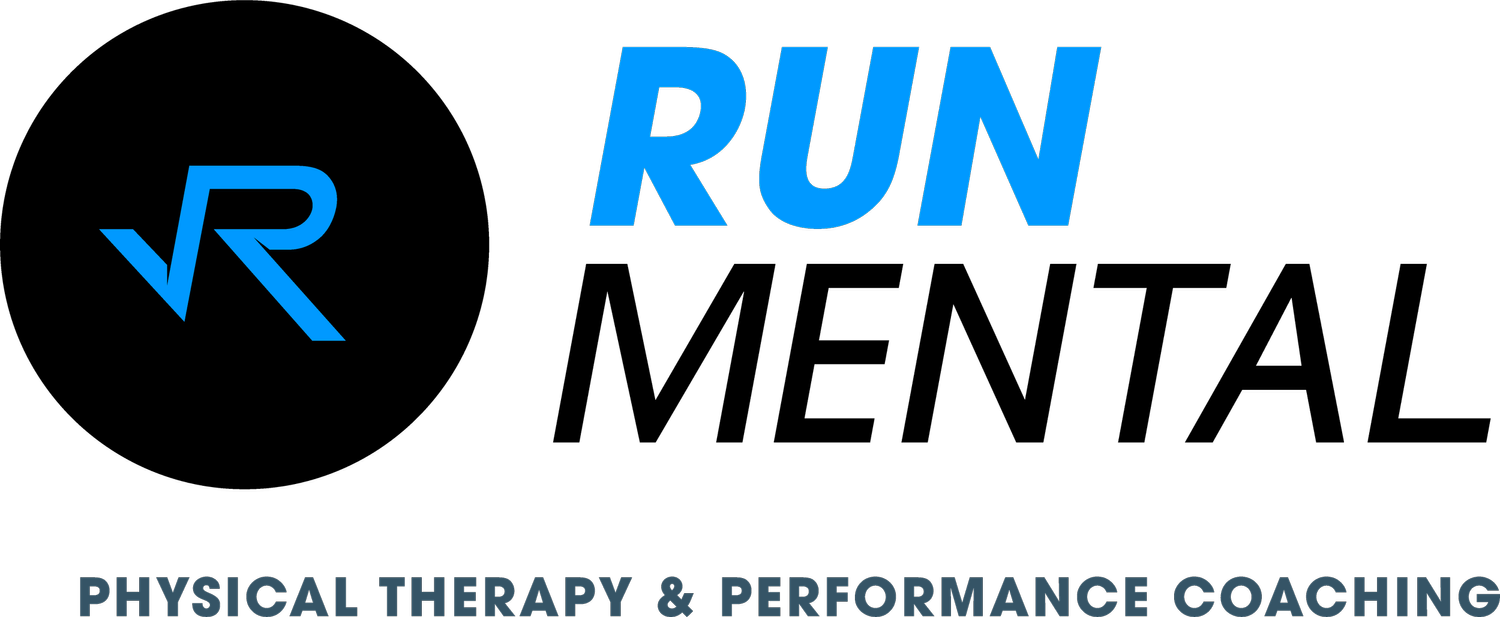Passive Modality Cycle
Dear Runners, Are you stuck in this trap, circling around and around?
Far too many people are! Our society that prioritizes and loves quick fixes. But the effects of these passive modalities (dry needling, massage, cupping, scrapping, adjustments or any other similar modality) don’t always get to the root of the issue. Do they temporarily modify your symptoms of pain and tightness? Yes! However, often runners develop a perceived need for these supports due to training errors and not respecting how much other life factors are playing a role in their tolerance of running. Thus, they become trapped the passive modality cycle. It’s easy to fall into. (Gregory 2022, Sefferin 2019, Troffa 2020, Savva 2021, Neilson 2014, Otter 2016)
Other relevant factors can include sleep, fueling, hydration, overall stress, and negative life events such as going through a divorce, losing your job, or a family member becoming ill. When these other life factors are present, it is not a time to increase volume, add intensity, increase frequency of runs, or depend more heavily on running to manage your mental health. Running can play a role, but it shouldn’t be your sole strategy.
Unfortunately, that’s not how many runners approach the situation. I was stuck in this cycle for years--desperate to keep running, reaching for anything and everything that might have the potential to make that possible. Knowingly or not, many use running as a coping strategy while not addressing issues that can limit their running.
Since running is a primary means for many people to maintain their health, not being able to run becomes a problem in multiple ways. As a result, they reach out for any modality that will modify their physical symptoms and keep them running. More than likely, this will have a positive effect…for a while. Eventually, though, that modality is unlikely to help. Nor will any others. At some point we have to go deeper and address the training errors, identify relevant life factors, and go through formal, and thorough physical rehabilitation. Most importantly, we must be ready to make this change, because the more you begin to understand and address the root cause(s), the more the locus of control falls on you rather than someone else to help control your situation and well-being. But if you can make it there, the effects are lasting and you’ll forever know how to better navigate any future situation.
I used to be in that predicament, always bouncing from injury to injury, getting fit and then getting injured again. I was continually reaching for that next modality or life hack that would allow me to keep going. Today, I don’t do much of that. Eventually, my journey led me to recognize that there aren’t any short cuts. You have to be patient, slow down, and recognize when and where to push. Now, help others break this cycle of relying on passive modalities. You have everything inside you that you need in order to manage things independently, if you are open and ready to explore it. It won’t be easy, but it will be worth it.
I am not an opponent of passive modalities. There is nothing wrong with them as a small part of a bigger plan. It is very reasonable to use them as an early-stage strategy to manage symptoms. At some point, though, we have to move past them, using a therapeutic dosage of exercise, activities, and eventually a progressive running plan to get back into training full-time.
However, many people (including clinicians and athletes) don’t use them in this manner. Instead, they view these modalities as a way to address symptoms in the short term and get back to running ASAP without ever addressing anything meaningful. If we instead take a step back, address training behavior, acknowledge and account for life stressors, and manipulate supplementary exercises for tissue health, everything changes! Rarely, if ever, will you need these passive modalities if you address the underlying issues well.
-Signed, former passive modality addict
Disclaimer: I do use passive modalities (mostly manual therapy) occasionally, though sparingly. The results have been very favorable when I also focus on aspects that have a larger long-term impact. My skepticism about passive modalities is based on the positive results seen without them and on working with people who have already tried a number of these solutions before seeking my help.
References
1. Gregory T., Rauchwarter S., et al. Clinical Commentary: Rehabilitation Using Acute Dry Needling for Injured Athletes Returning to Sport and Improving Performance. Arthrosc Sports Med Rehabil. 2022 Jan; 4(1): e209–e213.
2. Sefferin C., Cattano N., et al. Instrument-Assisted Soft Tissue Mobilization: A Systematic Review and Effect-Size Analysis. J Athl Train. 2019 Jul;54(7):808-821. Epub 2019 Jul 19
3. Troffa D., Obana K., et al. The Evidence for Common Nonsurgical Modalities in Sports Medicine, Part 2: Cupping and Blood Flow Restriction. J Am Acad Orthop Surg Glob Res Rev. 2020 Jan; 4(1): e19.00105
4. Savva C., Karagiannis C., et al. The analgesic effect of joint mobilization and manipulation in tendinopathy: a narrative review. J Man Manip Ther. 2021; 29(5): 276–287.
5. Neilson R., Parner E., et al. Excessive progression in weekly running distance and risk of running-related injuries: an association which varies according to type of injury. J Orthop Sports Phys Ther. 2014 Oct;44(10):739-47
6. Otter A., Brink M., et al. A Negative Life Event Impairs Psychosocial Stress, Recovery and Running Economy of Runners Int J Sports Med. 2016 Mar;37(3):224-9. Epub 2015 Dec 15


